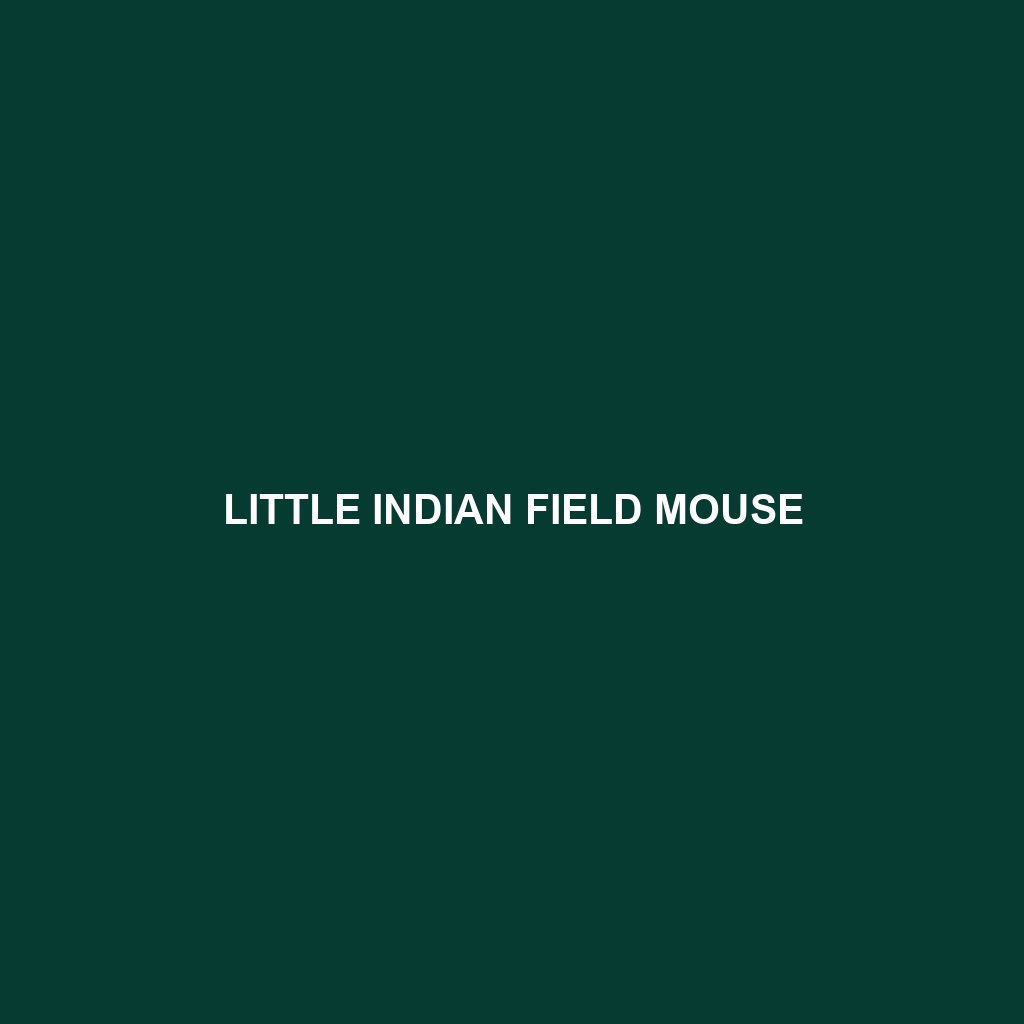Species Description: Little Indian Field Mouse
Common Name: Little Indian Field Mouse
Scientific Name: Mus booduga
Habitat: The Little Indian Field Mouse is primarily found in parts of South Asia, particularly in India, Pakistan, Bangladesh, and Nepal. This species thrives in a variety of environments, including grasslands, agricultural fields, and open shrublands. It prefers areas with abundant vegetation that provide cover and food sources, often dwelling in proximity to human habitation, which offers additional shelter and resources.
Physical Characteristics: The Little Indian Field Mouse typically measures about 8 to 10 cm in body length, with a tail that is often longer than its body. Its fur is generally a soft, light brown or gray color, with lighter underparts. Distinctive features include its relatively large ears and long, pointed snout, adapted for foraging in the grass. Adult individuals may weigh between 15 to 30 grams, making them small and agile creatures, well-suited to their environment.
Behavior: This species is primarily nocturnal, emerging at night to forage for food. Little Indian Field Mice are known for their agility and ability to quickly navigate through grass and vegetation. They are social animals, often seen in small groups, and display a range of vocalizations to communicate with one another. Their burrowing behavior allows them to create extensive underground networks, providing protection from predators and harsh environmental conditions.
Diet: The diet of the Little Indian Field Mouse is primarily herbivorous, consisting mainly of seeds, grains, and various plant materials. They are also known to consume roots and occasionally insects, which supplement their nutritional intake. Their feeding habits contribute significantly to seed dispersal, making them an important component of their ecosystem.
Reproduction: Little Indian Field Mice have a breeding season that varies by region but typically occurs during the warmer months. Females can produce multiple litters each year, with an average of 3 to 6 offspring per litter. The young are born blind and hairless, relying on their mother for warmth and nutrition until they are weaned at about three weeks of age. Notably, parental care is shared among adults in the population, increasing the survival rate of the young.
Conservation Status: The current conservation status of the Little Indian Field Mouse is classified as “Least Concern” by the International Union for Conservation of Nature (IUCN). However, habitat destruction and agricultural expansion pose potential threats to their populations in certain regions.
Interesting Facts: The Little Indian Field Mouse is often mistaken for other small rodent species due to its size and coloration. They are adept at surviving in changing environments and can thrive in disturbed areas, showcasing their resilience. Additionally, their role in controlling insect populations and dispersing plant seeds enhances their ecological significance.
Role in Ecosystem: The Little Indian Field Mouse plays a vital role in its ecosystem as both a prey and a seed disperser. This mouse serves as a critical food source for various predators, including birds of prey, snakes, and larger mammals. By aiding in the germination of seeds through their foraging behavior, they contribute to the maintenance of plant diversity and the overall health of their habitats.
